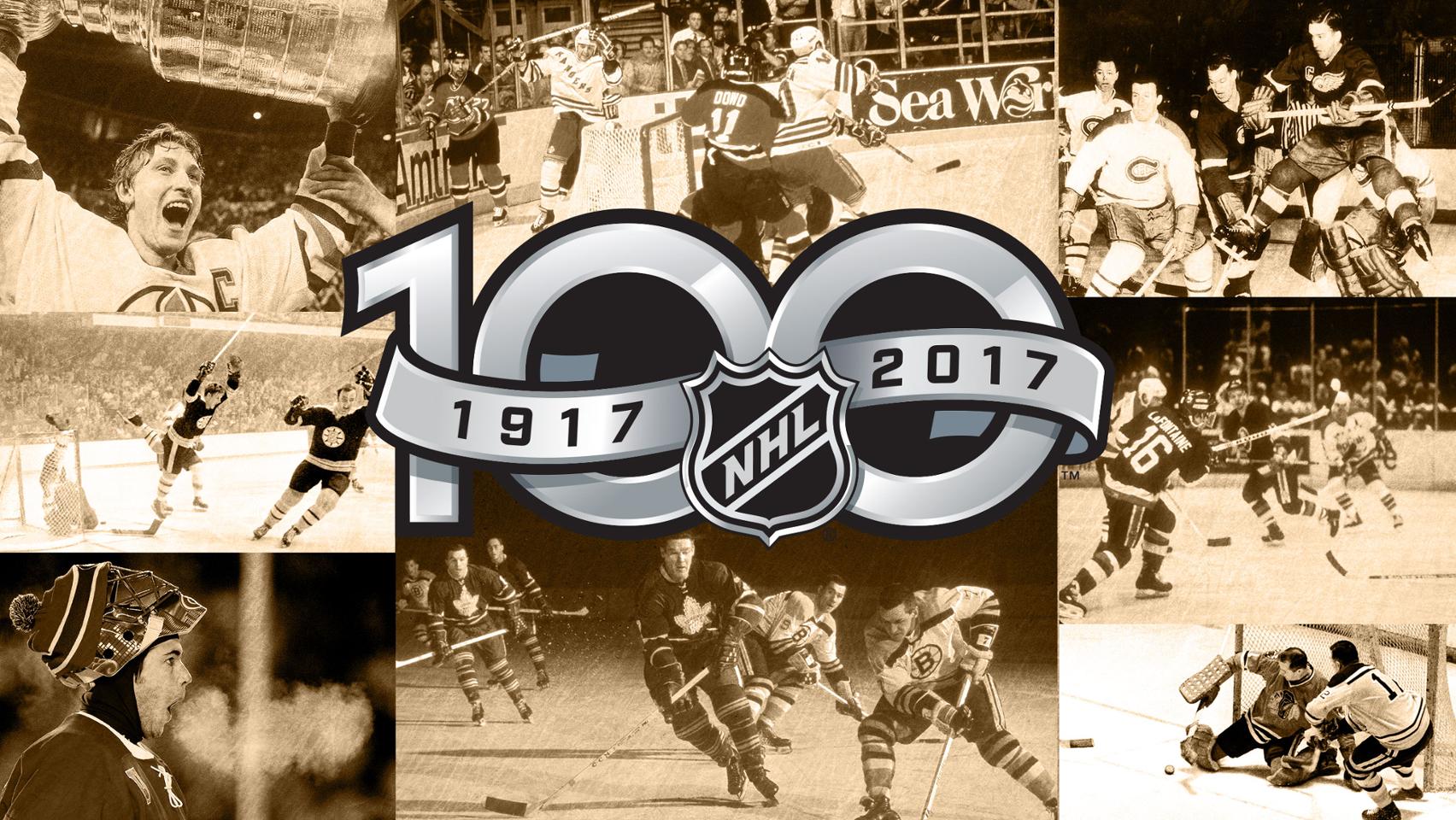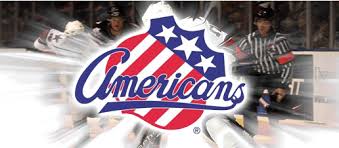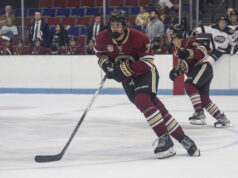By Stu Hackel / Special to NHL.com —
Mike Bossy was a phantom. He’d just vanish while his New York Islanders teammates moved the puck up ice and around the offensive zone. Then, seemingly out of nowhere, he’d materialize with no enemy checker near him just as a pass would arrive on the blade of his stick.
That wasn’t the extent of his magic, however, because Bossy’s hands were quicker than your eyes – or those of the opposing goalie. He’d propel the puck goalward instantaneously — so quickly that the movements of his arms and wrists were impossible to detect.
Or Bossy would be carrying the puck, closing in on a backskating defenseman who was intent on preventing both the puck and the right wing from advancing anywhere near the goal. The defenseman was sure he had his prey lined up for a rough ride when suddenly – poof! – Bossy was gone and so was the puck. Then – boom! – they were behind their hunter with only the goalie in front of them, and you knew what would happen next.
And, like any good phantom, Bossy could apparently defy gravity. His body was totally parallel to the ice for perhaps his most famous goal, scored in Game 3 of the 1982 Stanley Cup Final against the Vancouver Canucks. As the oft-seen slow-motion video from ice level reveals, Bossy had corralled a rebound and was knocked off his feet. Yet, while airborne, he pulled the puck to him and swiped a backhander off the post and into the net behind Canucks goalie Richard Brodeur. The only thing touching the ice as he got the shot away was the blade of Bossy’s stick.
All this stealth activity came in the service of Bossy’s supreme talent and his all-consuming passion — putting the puck in the enemy’s net. “Scoring goals was what mattered to him most,” his longtime center and close friend Bryan Trottier said. “He’d get mad at himself if he didn’t produce in a game.”
It made him the most dangerous sniper of his era. Beginning with his rookie season in 1977-78, he scored more than 50 goals nine straight times, a feat of goal-scoring consistency no other NHL player has equaled. Even Wayne Gretzky, who also scored 50 nine times, could only (only!) manage eight straight.
Bossy and Gretzky also share the record for most 60-goal seasons (five), but Bossy alone has the highest goals-per-game percentage in NHL history, scoring a goal in 76 percent of his games.
And when a chronic back injury forced him to retire after 10 seasons, Bossy had also amassed 85 goals in 129 playoff games, then the most in NHL history. He was an essential ingredient in the Islanders dynasty of the 1980s and was inducted into the Hockey Hall of Fame in 1991.
Yet, apart from his immense desire to put the puck in the net, Bossy was unlike previous star goal-scorers. Lean and wiry rather than robust, he was not a raging bull like Maurice Richard, a muscular specimen like Gordie Howe and Bobby Hull, nor a hulking tree trunk like Phil Esposito. To his Islanders coach, Al Arbour, Bossy at first “looked injury-prone, kind of thin and frail.” It was a deceiving appearance.
“Bossy stands 6 feet and weighs 185 pounds,” a Sports Illustrated profile read, “and though he plays a finesse game, he also has the strength of a longshoreman. He’s among the fastest skaters in the league and quite difficult to knock off his feet because his agility prevents an opponent from getting more than a glimpse of him head on; he skates at you in 45-degree angles. But Bossy’s greatest physical asset is his hand speed. His wrist shot, off which he scores three quarters of his goals, is lethal, but it’s neither the velocity of the shot nor its accuracy that makes it so troublesome for goaltenders.”
“He’s ultradangerous in front of the net,” Arbour said. “His hands are like lightning and he has a great instinct for the puck.”
What seemed otherworldly to everyone actually resulted from hours upon hours of practice. Even when Bossy was a rookie, Arbour took note of his strong wrists and powerful shot and said, “He’s also one of the hardest workers on the club.”
One additional factor contributed to Bossy’s prowess: “I probably developed what scouts called my quick hands and quick release more out of self-defense than anything else,” he said in his autobiography, “Boss: The Mike Bossy Story.” “The NHL was zoom-zoom-zoom compared to junior. I learned to make quick passes and take quick shots to avoid getting hammered every time I had the puck.”
He came to the NHL as a 21-year old with impressive credentials. The teenage Bossy had terrorized goaltenders with Laval of the Quebec Major Junior Hockey League, scoring 308 goals in a four-season span. But because of that league’s spotty reputation for defensive hockey, many NHL organizations sniffed at Bossy’s offensive bounty. Plus, Bossy himself was considered a poor defensive player and, since he was a noncombatant in that league’s frequent on-ice melees, he was tagged as soft.
Consequently, Bossy slid in the 1977 NHL Draft all the way to the No. 15 pick, where the Islanders gleefully awaited. His hometown team, the Montreal Canadiens, had passed on him, and two clubs, the Rangers and Maple Leafs, each passed on him twice. Islanders GM Bill Torrey never believed Bossy would still be available when his team picked.
Still, Torrey’s hockey men had kept their eyes on Bossy. Islanders chief scout Henry Saraceno had coached him in midget hockey and thought Bossy was the best junior scorer since Guy Lafleur. With the grinding Islanders in serious need of offense, Arbour implored the hockey department, “Get me the scorer. I can teach him to check a little bit, but nobody can teach anybody how to put the puck in the net.”
During the course of his first contract negotiation, Bossy was asked by Torrey how many goals he expected to score in his rookie year. “Fifty,” came the reply, although no NHL rookie had ever hit that number. The record was 44. But Bossy liked to set and achieve his targets, although he disclosed in his autobiography that he wasn’t really sure 50 was possible. His agent had suggested that response, believing a show of confidence would impress Torrey. For his part, the skeptical, bow-tied Isles GM politely chuckled.
In training camp, Arbour installed Bossy on the right wing with two future fellow Hall of Famers, the excellent all-around center Bryan Trottier and rugged left wing Clark Gillies. Dubbed the “Trio Grande,” they meshed perfectly. Bossy absorbed Arbour’s lessons in defensive responsibility and the torrent of goals commenced. He tied Richard Martin’s rookie record in the Islanders’ 59th game, then, following an uncharacteristic slump, reached 50 in Game 76. He added three more that season and won the Calder Trophy as rookie of the year. If Torrey chuckled now, it was because Bossy gave his club a new dimension.
More prolific campaigns would follow, including Bossy’s 69-goal sophomore season. That would be his career high in that department, and it was the second most in one NHL season at the time. In 1981-82 he had 83 assists and 147 points, the highest totals any NHL right wing had ever rung up in those categories.
All the goals, the awards, the Stanley Cup championships did not come easily for Bossy and the Islanders. The team annually stumbled in the playoffs during the late ’70s after strong regular seasons and developed a reputation as “chokers.” Also, Bossy was regularly marked for physical treatment by foes. And he was often quite vocal when he felt he or his team was somehow denied recognition that was deserved and had his share of squabbles with both opponents and teammates.
He was particularly frank about issues like cheap shots and fighting in hockey, to which he was vehemently opposed. He stuck to his principles despite the prevailing sentiment of the period and he backed it up in the gentlemanly way he played the game, being awarded the Lady Byng Trophy three times.
He played a major role in his team’s four straight Stanley Cup championships beginning in 1980, which dispelled the choker label. “Being a Montreal boy with my name on the Stanley Cup was the greatest,” he said. And, whatever his views may have been in his various pronouncements, they never eclipsed Bossy’s unquestioned brilliance on the ice.
Of all his accomplishments, that of 1980-81 — training his sights on Richard’s standard of 50 goals in 50 games and reaching it — might have been his favorite. No one had matched it in the 36 years since the “Rocket” had achieved it. Bossy made it his crusade. Scoring in bunches, he had 25 in 23 games, then 40 in 41 before slowing down. A four-goal game and a hat trick got him back on track but he needed two goals late in Game 50 against the Quebec Nordiques to match Richard. With the crowd chanting, “BOSS-SEE! BOSS-SEE!” he got the first past goalie Ron Grahame with 4:10 to play, turning Nassau Coliseum into a madhouse. Later, Trottier threw a pass from the right point to open ice at the left faceoff circle. In typical, mind-boggling fashion, the phantom sniper appeared out of nowhere and fired home No. 50 with 1:29 left.
He beat the clock as he often did. But time ran out prematurely on his career. He was just past 30 years old when he played his final game. And like a phantom, he was gone.
(Reprinted with permission of NHL.com)






